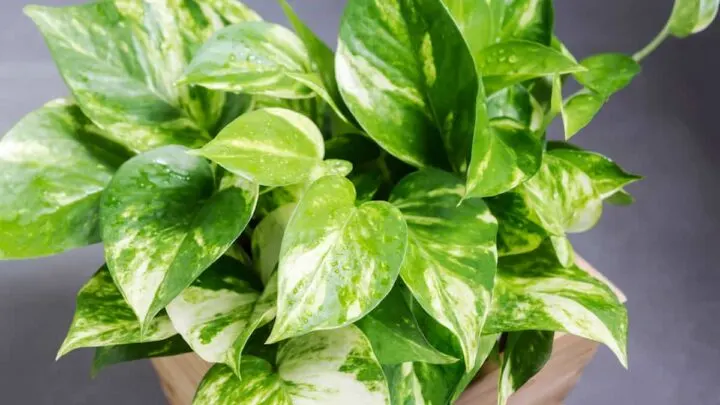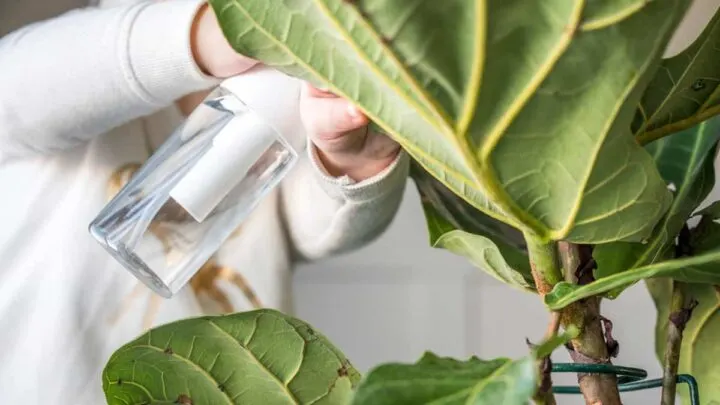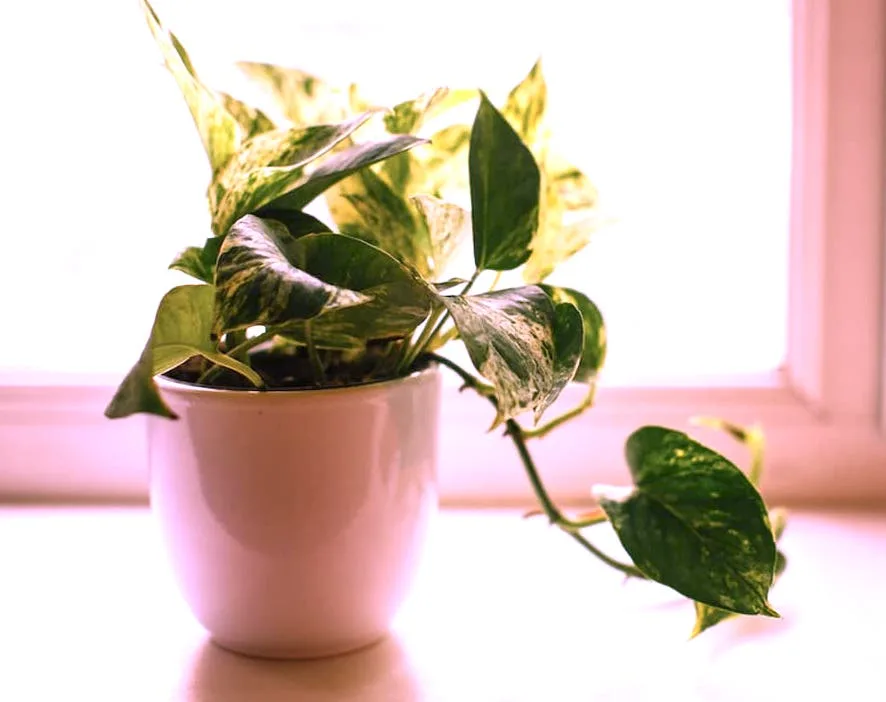The pothos plant, or the “devil’s ivy”, is an indoor plant known for making the air cleaner and healthier to breathe. If you don’t have much of a green thumb, these are the plants for you. However, sometimes they may experience some problems, and even look as if they are about to die off.
No worries though, reviving a dead pothos plant is quite simple as long as you understand what the underlying causes are. But, how exactly do you go about reviving a dead pothos plant?
To revive a dead pothos plant you’ll want to change its environment by adjusting the humidity levels, misting the leaves, and even increasing the amount of sunlight the plant receives. In addition, the soil may need to be refurbished with slow-release fertilizer as well as an adjustment to watering schedules.
Beyond just changing your pothos plants environment and location, its also a good idea to check for pests and bacterial issues in the soil. Root rot is also a leading cause in pothos plants dying, and something to be aware of.
Whether you’re growing pothos plants or not, the information below can be helpful for other types of succulent plants as well. Read on to learn more about how to revive dead pothos plants, why they may be dying, and much more.

Why is my pothos plant dying?
First, we should discuss why your pothos plant may be dying in the first place. It usually has something to do with the growing conditions it is in.
Overwatering the Plant
One of the most common things many plant owners do is overwater their plants. Your plant looks a little sad, and it’s easy to believe it needs more water, right? Well, it is also very possible that it has too much water.
Like most indoor plants, Pothos plants don’t need as much water as we think they do. You should be watering your pothos plant once a week or once every other week, depending on how dry it is, the size of your plant, or how warm it is.
Pothos plants really like to dry out between waters; then, they prefer one good, deep water. Also, the thickness of your soil can determine whether you need more water or not. If the pothos plant is planted in peat moss, then chances are you’re overwatering as peat will hold moisture than just top soil on its own.
Lack of Water
Of course, the flip side of overwatering is underwatering. It is easy to forget to water our plants, or we may just think they don’t need water. Indoor houseplants are easy to forget too. They rarely get too much sunlight, and are not really subject to the harsh conditions of outdoor plants.
It can be hard to tell when exactly pothos plants need water in the first place.
The general guideline for knowing when to water pothos plants is to poke your finger down into the soil. If it feels dry one inch down, you most likely need to water your plant. If watering more frequently is a huge task for you, perhaps relocating your plant to a less sunny location can help it retain more moisture between waterings.

Not Enough Sun
Pothos plants generally need about 12 hours of sunlight a day. This is when they thrive the most, produce the largest leaves, and look the most green. If they have fewer hours of sunlight a day, you may notice your pothos plant growing smaller leaves and looking a little less green. Here are some examples.
| Hours of Sunlight | Size/Color of Leaves |
| 12 hours | 8-12 inches, bright and deep green |
| 10 hours | 8-10 inches, less bright, still a deep green |
| 6 hours | 4-8 inches, fading green, overall looking much more pale |
| 4 hours | No more than 4 inches, pale green, none of the leaves holding a strong color |
The table above shows the hours of sunlight a pothos plant may be receiving, how big the leaves may grow, and how green they may get.
As you can see, as the plant gets fewer hours of sunlight a day, it loses a lot of color and growth in its leaves. If a pothos plant gets anything less than 4 hours, the plant may begin to die, and it most likely will be very stunted.
Season and Temperature
Pothos plants are technically tropical plants, which means they prefer warmer temperatures and a more humid environment. Mainly, pothos plants like to be in temperatures above 50 degrees, with as much humidity as possible. They do the best when the temperatures are between 65-70 degrees F.
Since pothos plants are normally indoor plants, they don’t care what season it is outside as long as you have the right temperature for them. However, they are normally warmer weather, spring, and summer plants.
When the temperatures go below 50 degrees, including nighttime, the plant may start to shrivel up, closing in its leaves to hold in as much warmth as possible. The plant will do the same if the climate is too dry.

Humidity
You may be wondering, what does humidity do for pothos plants? Is it that important? If you want healthy pothos plants, the answer is: absolutely. As I mentioned above, Pothos plants are tropical plants that love humid climates. Humidity helps circulate the air, stimulates plant growth, and provides moisture for the plant leaves.
When the humidity is around 60%, this is when a pothos plant will be the happiest. However, when the humidity is too high, the plant may also be susceptible to rot and mold; there is a fine line.
| Humidity Percentage | Overall Pothos Health |
| 65-100% | Humidity too high, risking dangers of mold, and fungal diseases. |
| 40-60% | The perfect level of humidity, generally what you want in the area you have your pothos plants in. |
| 0-35% | Risking plant dehydration, plant will most likely wilt and lose color. |
This table shows different humidity percentages compared to the corresponding pothos plant health.
Insects, Pests, and Predators
The nice thing about indoor plants is that it’s easier to control pests. However, once they are there, it can be difficult to get rid of them. Bugs like aphids, thrips, whiteflies, mealybugs, and fungus gnats are all pests that feed off pothos plants, causing them to lose nutrients and die.
Bacterial Infections And Fungus
Pothos plants can get certain bacterial infections and fungal diseases. They can be spread from bugs, spores in the air, overwatering, or cross-contamination, and they are most susceptible to bacterial leaf spot and powdery mildew.
Bacterial leaf spot can affect almost anything in your garden and house and is easily spread from plant to plant. The first symptoms appear on the leaves, making them look like they have small burn holes throughout the leaves.
Powdery mildew likes to show up in hot, humid conditions. If there is excess moisture on the leaves, it will mold to the plant, leaving this powdery-looking substance.
Too Much Fertilizer
Like all plants, pothos plants need good fertilizer and nutrients as well. Often, it’s easy to underfeed pants, but overfeeding them is just as bad.
Nitrogen burn is what commonly happens to many people. When a plant has too much nitrogen, the plant will go into shock, the leaves will start to decay, turn yellow, and the tips of the leaves will appear burned or singed.
The type of nitrogen you use matters too. Slow-release fertilizers are less likely to cause a burn vs something like a compost tea or liquid fertilizer that absorbs quickly. I’m a big fan of slow-release fertilizers, especially when you’re testing out something new with your plants.

Root Rot
Root rot is a fungal disease. It happens when a plant is sitting in water too long, often caused by overwatering, when it doesn’t have time or the ability to dry out. Soil that isn’t well-draining, and pots that don’t properly drain, can also create root rot.
And, the reality is with houseplants, this can happen a lot; especially in succulents. Fiddle leaf figs for example can commonly experience root rot. Pothos plants are no different; particularly if its in a location thats just not getting much sunlight at all on top of the soil being packed in.
Root rot will take over your pothos plant quickly and kill it in a matter of days. The first symptoms include your plant looking very weak and wilting.
How do I know if my pothos has root rot?
Obviously, we aren’t checking our plants’ roots every day. There is no need unless you suspect root rot.
It can be hard to determine if your plant is suffering from root rot by simply looking at the plant. However, if you see certain symptoms on the leaves, it’s a good idea to take your plant out of the pot and look for more symptoms. The complete list of symptoms includes:
- Browning, wilting leaves
- Browning, mushy-looking roots
- Soaked roots
- Unpleasant smell coming from the roots (usually smells like mold or mildew)
Can pothos recover from root rot?
The key to reviving pothos from root rot is time. It is essential to catch root rot quickly. Root rot will take over and can completely kill a pothos plant within 1-2 weeks. However, the good thing is, if you catch it quickly, you can help your pothos recover from root rot in no time.
How To Help Your Pothos Recover From Root Rot
If you have taken your pothos out of its pot and there are root rot symptoms, there is no need to panic. Follow these steps to get your plant healthy again.
Step One
Get a new pot and new soil. You’ll want to get a pot slightly larger than the pot your pothos plant was originally in. For instance, if you had a 2-gallon pot, you can go up to a 5-gallon.
You’ll also want fresh soil that is well draining. Peat moss is some of the best well-draining soil you can find. It is a good idea to mix peat moss into regular potting soil for planting pothos.
Step Two
Remove the pothos plant from its old container. Carefully, using pruning shears, cut away at the mushy, decayed roots. If you see any white, healthy roots, be very careful to leave those intact. You can take your pothos plant to the sink or a hose and gently wash away (using cold water) some of the decay and old soil.
Be sure to wash any tools you use on root rot thoroughly. Wash them with hydrogen peroxide as this will stop the spread of the disease.
Step Three
Once cleaned, spray your pothos plant’s remaining roots with 3% hydrogen peroxide. This will help sterilize any remaining root rot.
Step Four
It’s time to re-pot! Fill the fresh pot with the new soil, place your pothos into the pot, and cover. You can give your plant some water to get any excess soil out of the pot. However, you will want to leave your plant alone for at least a week afterward to let the roots dry out.

How To Revive Your Pothos Plant
If your plant isn’t suffering root rot, and you suspect it is something else from our list above, there are still many ways you can help bring new life into your pothos and revive it.
Watering Habits
Above, I mentioned that pothos plants don’t usually need as much water as we think, especially in a humid climate.
Normally, you only have to water your pothos plant once every other week, possibly once a week if your plant is larger or if it’s warmer. When you water your pothos, water until the pot feels heavy and the water has completely soaked through the soil. Ensure that the water is correctly dripping out of the bottom of the pot.
If overwatering is your issue, you may want to let your plant dry out for 1-2 weeks. After this time, your plant should start looking much healthier; then, you can begin on a better watering schedule.
Sunlight
To ensure that your pothos are getting the right amount of sunlight, it’s best to put them in your house’s sunniest window or room. If you can, you can also move your pothos to follow the sun throughout the day.
If you live in a place that doesn’t have good sunlight, try putting grow lights over your pothos plant. This will ensure they get the right amount of light to thrive. Remember, they need 12 hours of sunlight a day. However, they will still do well in 8-10 hours.
If you use a grow light, I find it easiest to put it on a timer, so you never forget to turn it on or off, and then your plant gets the right amount of light all day.
Temperature
It’s a bit easier to control the temperature in your home than it is outside. Hopefully, your house is above 50 degrees and can accommodate your pothos plant. If it is extra cold, keeping your pothos by a heater or in a warmer room will help your plant wonders.
Humidity
To help with things like temperature and humidity, it’s nice to have a hygrometer in the room where your pothos plant is. This way, you can see the room’s temperature, and you will also be able to see how humid the room is.
If the humidity is below 35%, I highly recommend getting a humidifier in the room with the pothos plant. Then, you can watch the levels with the hygrometer to ensure they are comfortable for the pothos plant.
Pests
If you notice pest damage on your pothos plant, the easiest thing you can do for household plants is to make an all-natural bug repellent.
Mix 1 teaspoon of dish soap into 1 gallon of water. Spay this on your plants, and it should do the trick. You can also spray your plants with neem oil or dust diatomaceous earth on your plant leaves to get rid of pests.
Bacterial Infections and Fungus
Sadly, bacterial leaf spot is an incurable disease. The only thing you can do is to throw your plant out or burn it. This will stop the disease from spreading to any other plants you may have.
Powdery mildew, however, is very curable. There are a few tricks to getting rid of it. First, you can simply spray your plant’s leaves down with water. Make sure to do this on a hot, dry day, as early as possible in the morning. If you use a humidifier, turn it off for this day so your plant’s leaves can dry.
You can also try mixing one teaspoon baking soda with one gallon of water and a few dashes of liquid dish soap. Spray your plant’s leaves with the mixture, and you should see the powdery mildew go away almost instantly.
Fertilizer
If your plant is suffering from nitrogen burn, you should try washing the nutrients out, by watering your plants every day, just for a couple of days. Then, let your plant dry out for a week or two.
Don’t give your plant any extra nitrogen until the leaves start to yellow and it seems like it may need nitrogen. Otherwise, you don’t need to feed it for a long time.
Final Thoughts
Pothos plants are a great beginner indoor houseplant. They are easy to take care of, and they are easy to revive. If you catch the issue quickly and change its environment, your pothos should continue to grow happy and healthy! Happy gardening!

Hi there, my name is Allie and welcome to my blog; GareningWithAllie!
Much of what you see written here is just our personal experiences with gardening. Along with the content I write here, there is also a unique collection of gardening topics covered by some of our close friends. I hope you find everything you read here to be helpful, informative, and something that can make your gardening journey the most lovely experience ever! With that said, Happy Gardening!
